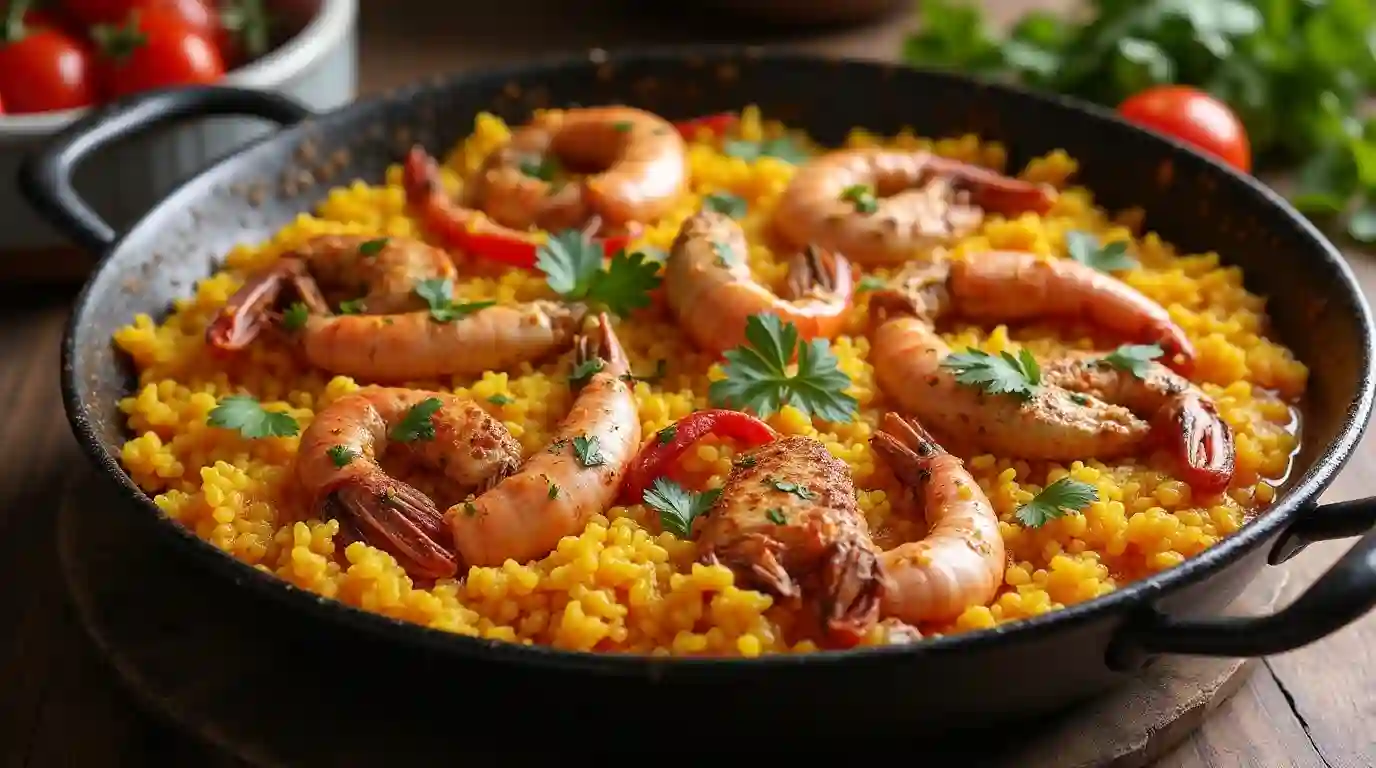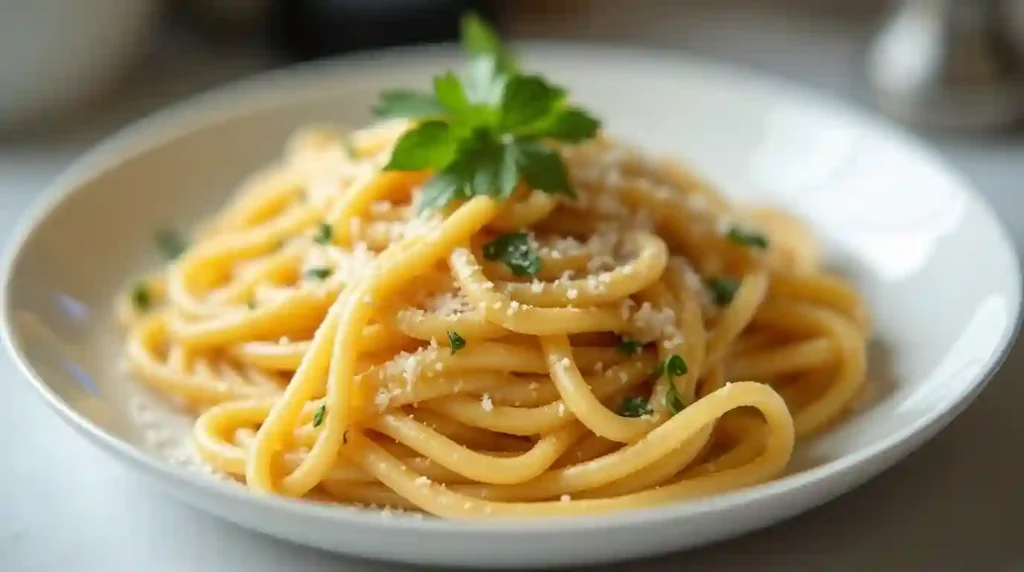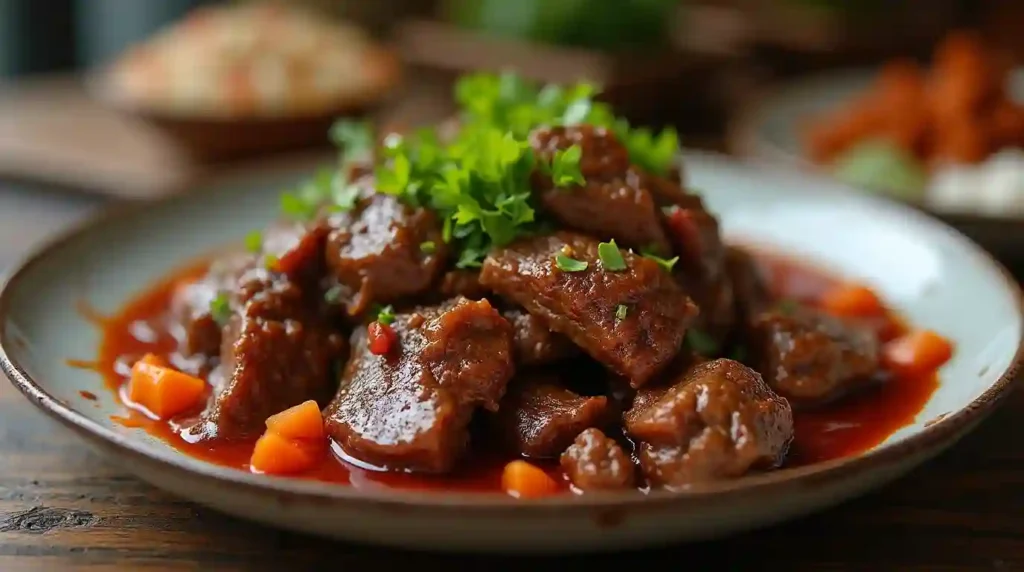Paella, a vibrant and flavorful dish, has captured the hearts and stomachs of food lovers around the world. Originating from sunny Spain, this iconic meal offers a colorful mix of ingredients, textures, and tastes. In this article, we’ll dive deep into the world of paella, exploring its rich history, what it’s made of, the essential components that create its signature flavor, and even those secret ingredients that can take your Spanish rice dish to the next level. Whether you’re a seasoned chef or a curious beginner, there’s something here for everyone. So, let’s get started!
The History of Paella
Origins of Paella
The story of paella begins in the picturesque region of Valencia, Spain. Traditionally, this dish was crafted by farmers and laborers who cooked their meals over an open flame. They used whatever ingredients were local and available—think rabbit, snails, green beans, and saffron—tossed together with rice.
Evolution of Paella
Over the years, paella has transformed, reflecting the diverse influences of Spain. Different regions added their own twist, using seafood along the coast or richer meats in the interior. Today, you can find various styles of paella, each telling a story of its own.
Essential Ingredients of Paella
The Heart of Paella
To create a delicious paella, you first need the right ingredients. This dish is known for its flexibility, but there are some staples that every authenticSpanish rice dish includes.
Table of Essential Ingredients
| Ingredient | Quantity | Notes |
|---|---|---|
| Bomba rice | 2 cups | Short grain rice for better absorption |
| Saffron | 1/2 tsp | Adds flavor and color |
| Olive oil | 4 tbsp | For cooking and richness |
| Chicken | 1 lb | Cut into pieces; can substitute with rabbit |
| Seafood (optional) | 1 lb | Shrimp, mussels, or calamari |
| Vegetables | 1 cup | Bell peppers, peas, or green beans |
| Broth | 4 cups | Chicken or vegetable broth |
Common Variations
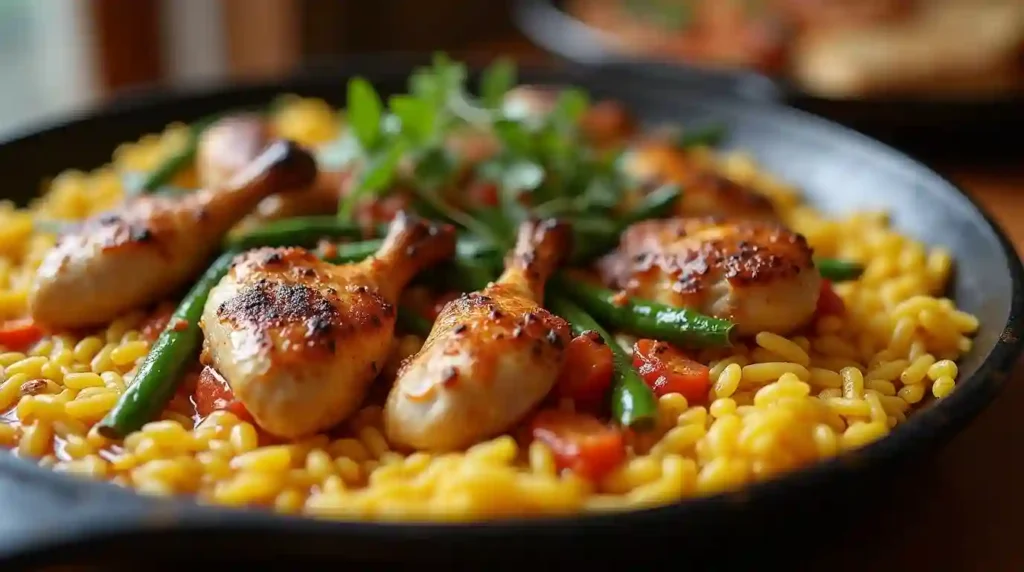
Depending on where you are, variations of paella can be found. For example, in coastal areas, you’ll often see seafood paella, packed with shrimps, mussels, and fish—yum! On the other hand, if you’re near the mountains, you may encounter meat paella, rich with chicken and rabbit. No matter what version you choose, the essential ingredients remain key to that signature flavor!
Cooking Techniques for Perfect Paella
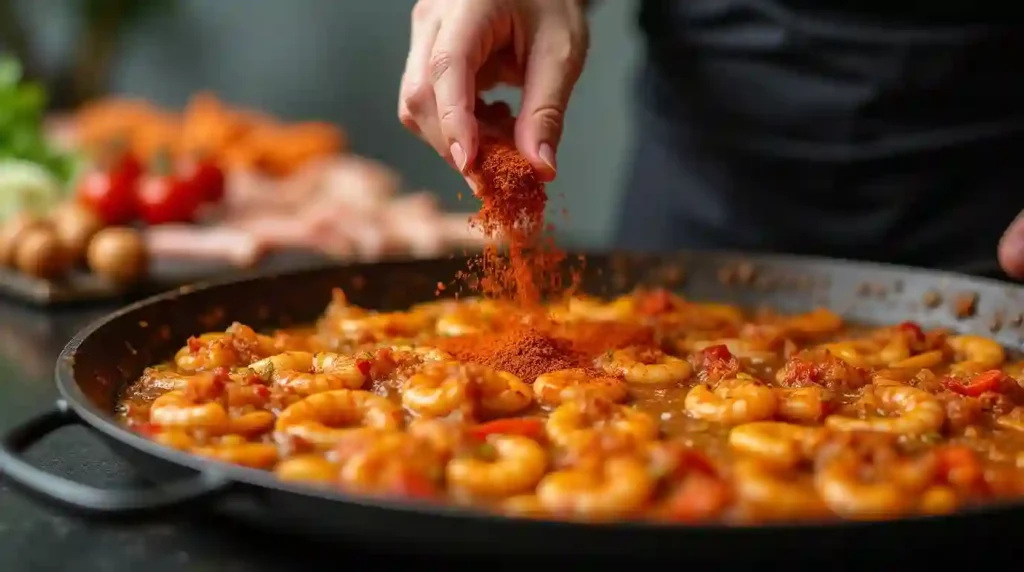
The Cooking Process
Now that you’ve gathered your ingredients, it’s time to cook your Spanish rice dish. The process may look easy, but a little know-how goes a long way!
- Heat the Pan: Start by warming olive oil in a wide, flat pan over medium heat.
- Sauté the Chicken: Add your chicken pieces and brown them until they get a nice color.
- Add Vegetables: Toss in your chopped vegetables and sauté them until they soften.
- Incorporate Rice: Stir in the bomba rice, coating it well in the oil. This helps to absorb all those lovely flavors!
- Pour in Broth and Saffron: Add the broth mixed with saffron, and make sure everything is evenly distributed.
- Let it Simmer: Lower the heat and let it simmer without stirring, allowing the rice to cook properly and create that delightful crust at the bottom, known as socarrat.
Secret Ingredients to Elevate Your Paella
Uncommon Additions
To take your paella to the next level, consider adding unique ingredients. Chorizo boosts flavor with its spicy kick, while artichoke hearts or asparagus lend freshness and vibrant color.
Enhancing Flavors
For added depth, toss in a pinch of smoked paprika or a splash of white wine during cooking to brighten the dish. Finally, garnish with fresh herbs like parsley or thyme to elevate aroma and taste. These enhancements not only personalize your paella but also create a memorable dining experience that reflects your culinary creativity!
Serving and Pairing Suggestions
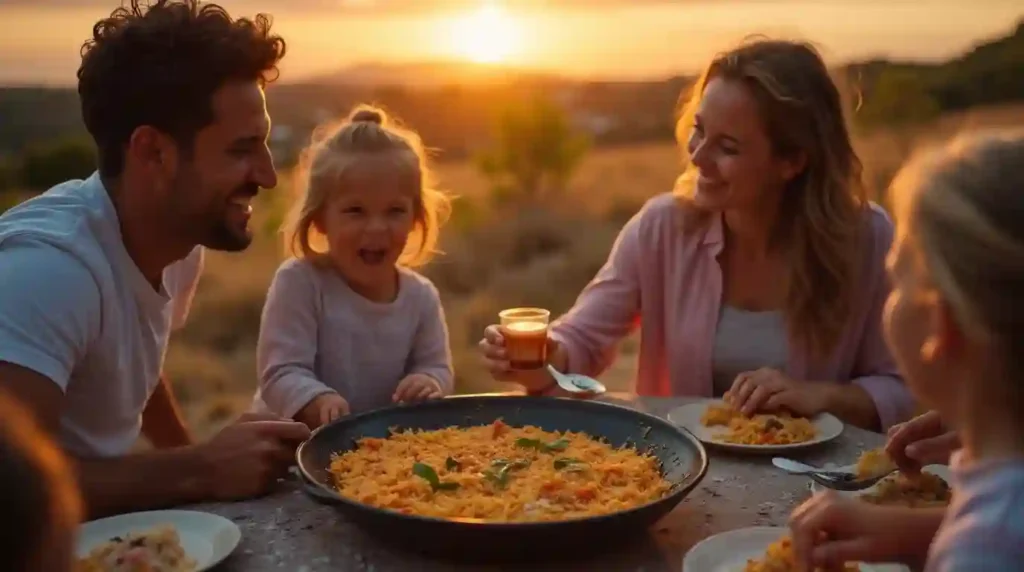
Presenting Your Paella
Serve your Valencia rice dish straight from the pan for a communal dining experience. Garnish it with fresh herbs and lemon wedges to enhance both the look and flavor.
Perfect Pairings
To complement your Spanish rice dish, try pairing it with traditional Spanish tapas or a light salad. A chilled Sangria or a glass of dry white wine makes for an excellent drink pairing, enhancing the dish’s rich flavors. By incorporating these serving and pairing suggestions, you’ll create a delightful meal that everyone will enjoy together, making your culinary efforts truly memorable!
For more interesting topics click on the following topics:
Common Mistakes to Avoid
Overcooking the Rice
One of the most common mistakes in making Spanish rice dish is overcooking the rice. If you let it cook too long, it will become mushy instead of having that perfect texture. To avoid this, keep an eye on the rice and test it a few minutes before it’s supposed to be done.
Skipping the Sauté
Another error is skipping the sautéing process. The sofrito, made from onions, garlic, and tomatoes, is essential for building flavor. So, take your time to sauté them well before adding the rice. By learning from these mistakes, you can ensure your Valencia rice dish turns out delicious every time!
Storing and Reheating Your Paella
Proper Storage
If you have leftover Spanish rice dish, store it correctly to maintain its taste. Allow it to cool completely, then transfer it to an airtight container. Keep it in the refrigerator for up to three days. Importantly, never let it sit out at room temperature for too long.
Reheating Tips
When it’s time to eat your leftover paella, reheating it properly is key. You can use the microwave, but a skillet on the stovetop is a better option. Add a splash of water to help restore moisture. Stir occasionally, and heat until warm. By following these tips, you’ll enjoy scrumptious paella even days after cooking!
Variations of Paella
Regional Dishes
it comes in various forms across Spain. Valencian paella uses chicken and rabbit, while seafood paella features shrimp and mussels. Each region offers unique ingredients, making it a versatile dish full of flavor.
Creative Twists
Feel free to experiment with ingredients like chorizo or roasted vegetables. Adding spices like saffron or smoked paprika enhances flavor, allowing you to craft your own signature variation of paella.
The Cultural Significance of Paella
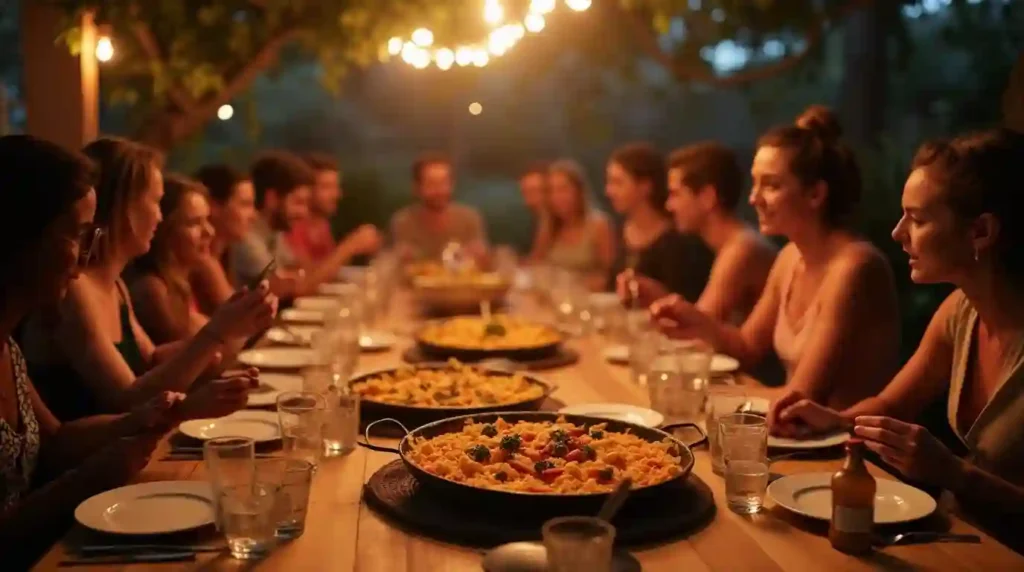
Tradition and Celebration
it is a cherished dish in Spanish culture, often served during family gatherings and celebrations. It symbolizes togetherness, making it a staple for weddings and festivals. Sharing paella brings families closer, creating lasting memories filled with joy and laughter.
A Culinary Heritage
The preparation of paella reflects Spain’s rich culinary heritage. Traditionally made outdoors over an open flame, it enhances the dish’s flavor. By enjoying Spanish rice dish, you connect with history and tradition, celebrating the beauty of shared meals and family bonds.

